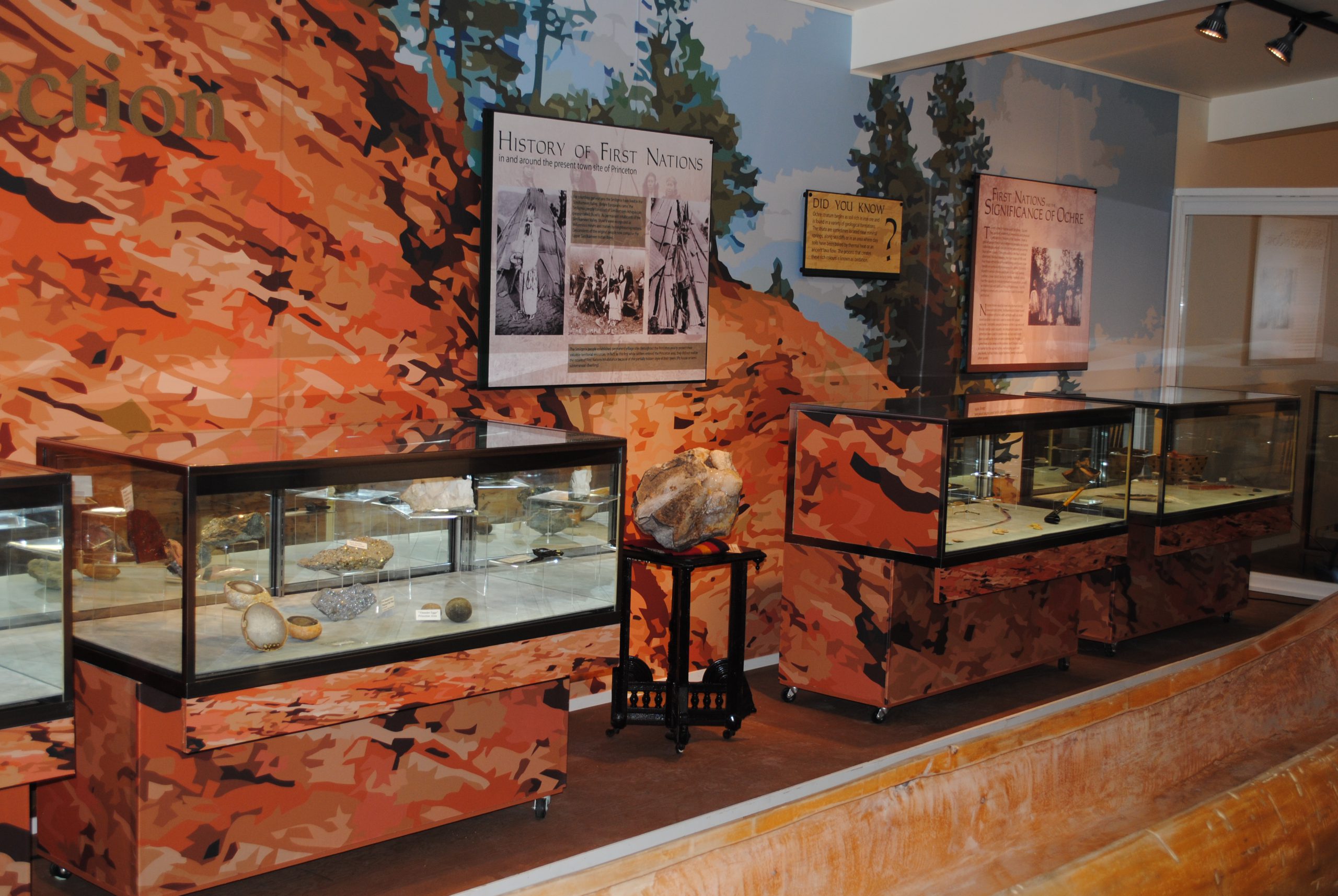The Princeton Museum
Established 1958
The best little Museum in the Similkameen
The Beginning…
The museum in Princeton, British Columbia, Canada was first established in 1958. It was
housed in a log cabin. It remained there until a Centennial project in 1967 saw the current
building on Vermilion Avenue constructed to be the new home of both the museum and the local library. For decades it was casually identified as the Museum/Library Building.
In 1970, the organization operating the museum officially became the Princeton and District Pioneer Museum upon registration under the BC Societies Act. The name was changed in 1983 to the Princeton and District Museum and Archives Society to better reflect the activities of the
group.
Outdoor displays received a new home when the Livery Stable and farm implement shed building/shelter were built in 1985 and the museum building experienced its first major expansion in 1999. This was when the Joe Pollard Wing was added to provide a safe and accessible home for his extensive collection of over 40,000 fossils and minerals. Another expansion took place in 2011 when the library moved to another location on Vermilion Avenue. This permitted the museum to double its square footage. The expansion included a complete facelift of the interior of the site which turned the facility into a must-see stop for anyone visiting the area.

The Princeton Museum buildings are owned and managed by the Town of Princeton with displays curated by the dedicated volunteers of the Princeton and District Museum and Archives Society. The partnership ensures that the facility will be part of Princeton, and a place where the history of the region will be safely stored and shared forever.
There are several collections housed in the building. They include:
● An 1880s cabin that was once the home of John Fall Allison’s daughter Lily, her
husband John Norman, and their six children.
● Approximately 4,000 photographs from 1880 to present.
● A First Nations basket display featuring various weaving styles and periods.
● A fossil and mineral collection of over 40,000 specimens, including several unique local discoveries.
● Newspapers printed in the region between 1900 to the present day.
● Many audiotape recordings of Princeton pioneers from 1980 to the present.
● Historic maps and mining reports dating from 1858 to the present.
● Allison Family history, photos, family tree, and supporting documents.
● A total of 83 Notman Studios glass plate photographs from the late 1800s and early 1900s.
● Several historic artifacts from area ghost towns including Allenby, Blakeburn, Copper Mountain and Granite Creek.
● A large number of recently acquired items of great significance to our community.